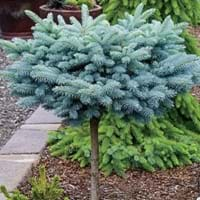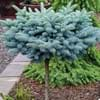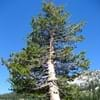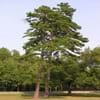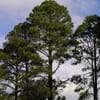Life Span
Perennial
Perennial
Type
Needled or Scaled Evergreen
Flowering Plants, Spices
Origin
Western United States
Mediterranean, Southwest Asia
Types
Not available
Star anise and more
Number of Varieties
Not Available
Habitat
Rocky areas, stream banks, Woodland Garden Canopy
Thickets, Woods
USDA Hardiness Zone
2-8
4-9
Sunset Zone
A2, A3, 1a, 1b, 2a, 2b, 3a, 3b, 4, 5, 6, 7, 8, 9, 10, 14, 15, 16, 17
H1, H2, 1a, 1b, 2a, 2b, 3a, 3b, 4, 5, 6, 7, 8, 9, 10, 11, 12, 13, 14, 15, 16, 17, 18, 19, 20, 21, 22, 23, 24
Habit
Pyramidal
Upright/Erect
Flower Color
Non Flowering Plant
White
Flower Color Modifier
Not Available
Not Available
Fruit Color
Brown
Gray Green, Tan
Leaf Color in Spring
Green, Blue Green, Steel Blue
Green
Leaf Color in Summer
Green, Blue Green, Steel Blue
Green
Leaf Color in Fall
Green, Blue Green, Steel Blue
Green
Leaf Color in Winter
Blue Green, Steel Blue
Green
Leaf Shape
Needle like
Lobed
Plant Season
Spring, Summer, Fall, Winter
Summer
Sunlight
Full Sun, Partial Sun
Bright direct sunlight
Growth Rate
Very Slow
Fast
Type of Soil
Clay, Loam, Sand
Loamy, Sandy, Well drained
The pH of Soil
Acidic, Neutral, Alkaline
Neutral, Slightly Acidic
Soil Drainage
Well drained
Well drained
Bloom Time
Not Available
Late Summer, Summer
Tolerances
Drought
Soil Compaction
Where to Plant?
Container, Ground, Pot
Ground
How to Plant?
Grafting, Seedlings, Semi-ripe cuttings
Seedlings
Plant Maintenance
Medium
Medium
Watering Requirements
Average Water Needs, Do Not over Water, Requires regular watering
Allow soil to be completely dry in between waterings, Medium, Water twice a day in the initial period
In Summer
Lots of watering
Lots of watering
In Spring
Moderate
Moderate
In Winter
Average Water
Average Water
Soil pH
Acidic, Neutral, Alkaline
Neutral, Slightly Acidic
Soil Type
Clay, Loam, Sand
Loamy, Sandy, Well drained
Soil Drainage Capacity
Well drained
Well drained
Sun Exposure
Full Sun, Partial Sun
Bright direct sunlight
Pruning
Remove damaged leaves, Remove dead branches, Remove dead leaves
Prune regularly
Fertilizers
All-Purpose Liquid Fertilizer
All-Purpose Liquid Fertilizer
Pests and Diseases
Aphids, Canker, Free of serious pests and diseases, Needle rust, Scale
Alternaria leaf blight, Aphids, Cutworms, Downy mildew, Powdery mildew, Rust
Plant Tolerance
Drought
Drought
Flower Petal Number
Not Applicable
Single
Fragrant Bark/Stem
Yes
Yes
Foliage Texture
Fine
Fine
Foliage Sheen
Matte
Matte
Attracts
Birds, Butterflies, Hummingbirds
Butterflies
Allergy
Not Available
Respiratory problems, Skin irritation, Skin rash
Aesthetic Uses
Showy Purposes, Used as Christmas tree
Not Used For Aesthetic Purpose
Beauty Benefits
Not Available
Not Available
Edible Uses
Not Available
Yes
Environmental Uses
Air purification, Windbreak
Air purification
Medicinal Uses
Not Available
Asthma, constipation, Cough
Part of Plant Used
Flowers, Inner Bark, Seeds
Flowers, Leaves
Other Uses
Paper pulp, Wood is used in construction
Oil is used for aromatherapy, Oil is used in perfume, soaps, creams, etc., Used for flavoring in Liquors, dairy products, gelatins,puddings, meats, candies, etc., Used for fragrance, Used as a spice
Used As Indoor Plant
No
No
Used As Outdoor Plant
Yes
Yes
Garden Design
Container, Feature Plant, Foundation, Mixed Border, Rock Garden, Wall, Screening, Wind Break
Edging, Feature Plant
Botanical Name
PICEA pungens 'Baby Blue Eyes'
Pimpinella anisum
Common Name
Dwarf Blue Spruce
Anise
In Hindi
Dwarf Blue Spruce
सौंफ़ का पौध
In German
Dwarf Blue Spruce
Anis
In French
Dwarf Blue Spruce
Anis
In Spanish
Enano Blue Spruce
Anís
In Greek
Νάνος Blue Spruce
γλυκάνισο
In Portuguese
Anão Blue Spruce
anis
In Polish
Dwarf Blue Spruce
Anyż
In Latin
Blue dwarf Spruce
Anethum
Phylum
Coniferophyta
Magnoliophyta
Class
Pinopsida
Magnoliopsida
Clade
Not Available
Angiosperms, Asterids, Eudicots
Tribe
Not Available
Not Available
Subfamily
Piceoideae
Not Available
Importance of Dwarf Blue Spruce and Anise
Want to have the most appropriate plant for your garden? You might want to know the importance of Dwarf Blue Spruce and Anise. Basically, these two plants vary in many aspects. Compare Dwarf Blue Spruce and Anise as they differ in many characteristics such as their life, care, benefits, facts, etc. Every gardener must at least have the slightest clue about the plants he wants to plant in his garden. Compare their benefits, which differ in many ways like facts and uses. The medicinal use of Dwarf Blue Spruce is Not Available whereas of Anise is Asthma, constipation and Cough. Dwarf Blue Spruce has beauty benefits as follows: Not Available while Anise has beauty benefits as follows: Not Available.
Compare Facts of Dwarf Blue Spruce vs Anise
How to choose the best garden plant for your garden depending upon its facts? Here garden plant comparison will help you to solve this query. Compare the facts of Dwarf Blue Spruce vs Anise and know which one to choose. As garden plants have benefits and other uses, allergy is also a major drawback of plants for some people. Allergic reactions of Dwarf Blue Spruce are Not Available whereas of Anise have Respiratory problems, Skin irritation and Skin rash respectively. Having a fruit bearing plant in your garden can be a plus point of your garden. Dwarf Blue Spruce has showy fruits and Anise has no showy fruits. Also Dwarf Blue Spruce is not flowering and Anise is flowering. You can compare Dwarf Blue Spruce and Anise facts and facts of other plants too.
